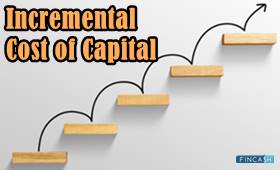
Table of Contents
Incremental Cost of Capital
Incremental Cost of Capital is a common term used in context with capital budgeting. It is known to refer to the overall average cost an organization is known to incur for issuing a single additional unit of equity or debt. There is a proper incremental cost of capital formula as well that will help you to understand the given concept.

The incremental cost of capital is known to vary depending on the number of additional units of equity or debt an organization wishes to issue. The ability to accurately calculate the overall cost of capital along with the respective incremental effects of issuing additional equity or debt helps businesses to reduce the overall financing costs.
An Insight into Incremental Cost of Capital
The overall cost of capital is referred to as the overall cost of funds an organization requires for financing its day-to-day operations. The cost of capital of an organization would depend on the type of financing mode that has been used –this is referred to as the cost of equity when the business receives its financing through equity. On the other hand, it is referred to as the cost of debt when the business receives its financing through debt issuance.
Most organizations are known to make use of the combination of equity & debt issuance for financing the respective operations. This is the reason why the total cost of capital gets derived from the weighted average of the respective capital sources –referred to as the WACC or weighted average cost of capital.
Talk to our investment specialist
As the given cost of capital is known to indicate a specific hurdle rate that an organization is expected to overcome before generating value, it is known to be immensely utilized in the process of capital budgeting. The given Factor is made use of for analyzing whether or not the company should proceed with the given project through equity or debt financing. The incremental factor in the incremental cost of capital is used to denote how the Balance Sheet of the company might observe the respective borrowing costs rise up with respect to the coupon it is required to pay to the investors for buying the respective debt.
The coupon turns out to be the reflection of the overall risk of creditworthiness of the company along with the respective Market conditions. Incremental cost of capital is referred to as the weighted average cost of new equity & debt issuances during the typical period of financial reporting.
Role of Incremental Cost of Capital in Affecting a Stock
When the incremental cost of capital of an organization increases, investors are known to perceive the same as a red flag indicating that the organization features a Capital Structure that is riskier. A major turning point in increase in the incremental cost of capital of the organization happens when the investors start avoiding the debt of the company because of worries over the overall risk.
All efforts have been made to ensure the information provided here is accurate. However, no guarantees are made regarding correctness of data. Please verify with scheme information document before making any investment.












